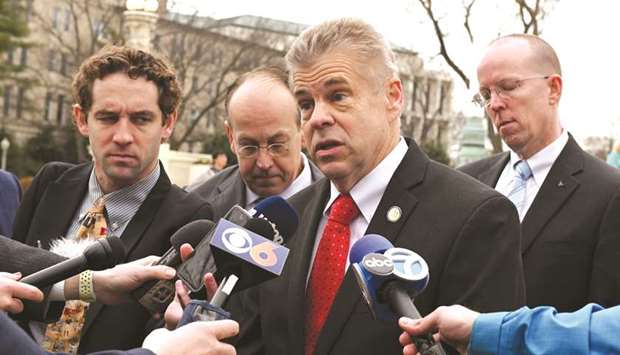US Supreme Court justices yesterday wrestled for the second time over whether Republican legislators in Virginia drew electoral districts in the state in a way that unlawfully diluted the clout of black voters.
The high court heard arguments in an appeal by the Republican-led state House of Delegates in defence of 11 state House districts that a lower court ruled last year violated the rights of black voters to equal protection under the law under the US Constitution’s 14th Amendment.
The case involves gerrymandering, a practice involving the manipulation of electoral district boundaries to marginalise a certain set of voters and increase the influence of others.
While the Supreme Court for decades has invalidated electoral maps due to racial gerrymandering, the justices have not yet made a definitive ruling on whether drawing legislative districts for purely partisan advantage violates the Constitution.
The court will hear two major cases on that issue next week, one from North Carolina and the other from Maryland. One way the court could resolve the Virginia racial gerrymandering dispute is to say that the House of Delegates, which sought to appeal the ruling, did not have legal standing to do so.
The state’s Democratic attorney general, Mark Herring, has argued that the House cannot pursue the case independently and that only he could decide whether or not there would be an appeal.
Some of the nine justices appeared sympathetic to Herring’s argument, although it is unclear if there is a majority in favour of that outcome.
Conservative Justice Samuel Alito suggested that the court could send the case to the Virginia Supreme Court to decide who can represent the state.
“I would be very uncomfortable trying to decide whether, as a matter of Virginia law, anybody other than the attorney general can ever represent the Commonwealth,” Alito said, referring to Virginia.
Morgan Ratner, a lawyer for President Donald Trump’s administration, argued that the House of Delegates does not have standing to appeal.
But Ratner said that the House of Delegates is correct that the lower court used the wrong standard to assess the districts.
Democrats have accused Republicans in Virginia and other states of crafting such legislative maps in a way that crams black and other minority voters, who tend to favour Democratic candidates, into certain districts in order to reduce their overall sway in the state.
The voters who brought the lawsuit accused Republicans of packing black voters into certain districts to diminish their voting power and make surrounding districts more white and more likely to support Republicans.
Conservative Justice Brett Kavanaugh expressed sympathy for the Republicans who drew the maps, noting that if they assigned fewer black voters to each district “they would get hammered from the other side, saying you are discriminating against African American voters because you’re not giving the voters a sufficient opportunity to elect the candidate of their choice.”
When the litigation first reached the high court, the justices in 2017 threw out an earlier lower court ruling that had found the 11 districts, as well as one other district, to be lawful.
The justices said the lower court had not sufficiently analysed the consideration of race by the Republican legislators in the process of drawing Virginia’s electoral map.
At issue was the state legislative map drawn by Republicans after the 2010 national census.
Since then, Democrats have made gains in Virginia in both state and federal elections.
The current governor and attorney general are both Democrats.
Race can be considered in redrawing boundaries of voting districts only in certain instances, such as when states are seeking to comply with the federal Voting Rights Act. That law protects minority voters and was enacted to address a history of racial discrimination in voting, especially in southern states.
A ruling is due by the end of June.

Virginia House of Delegates Speaker Kirk Cox speaks with the press outside the US Supreme Court in Washington after arguments yesterday in an electoral redistricting case.


